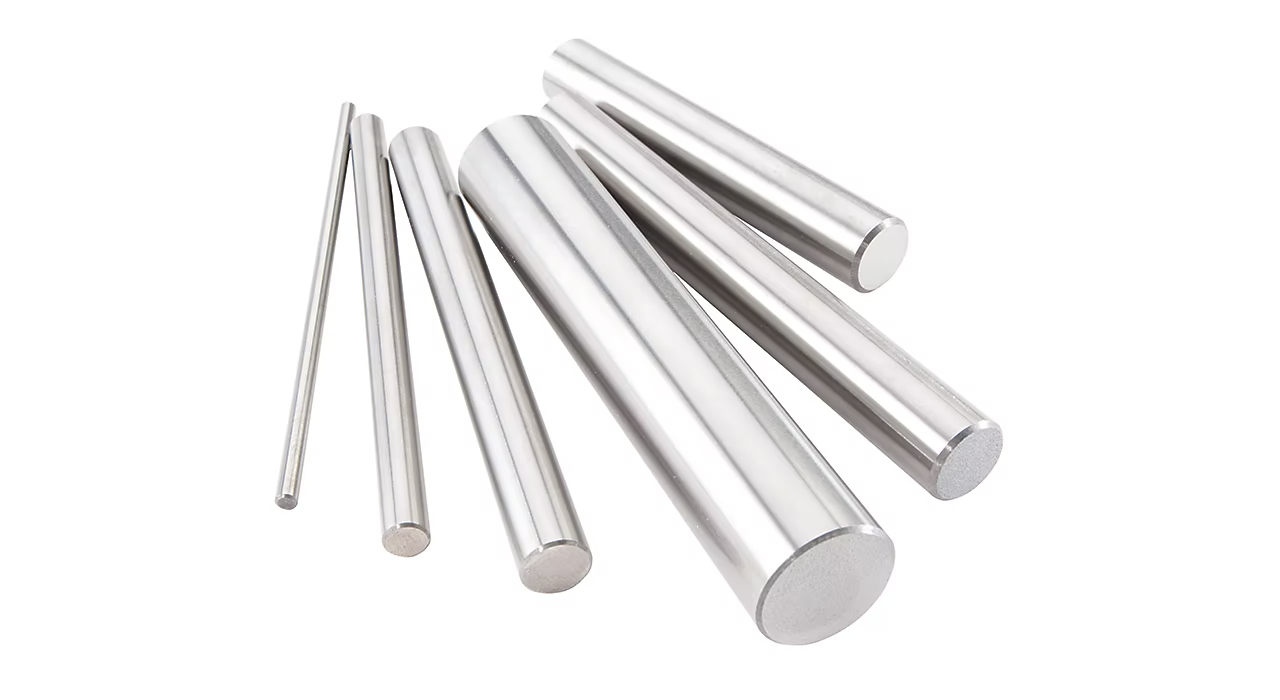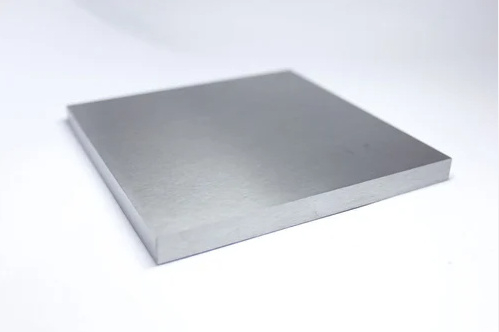Lorsque la résistance à l'usure standard ne suffit pas : nouveaux boutons en carbure conçus pour résister à la corrosion
Dans les industries confrontées à une usure extrême, carbure de tungstène boutons sont depuis longtemps considérés comme les champions de la durabilité. Mais que se passe-t-il lorsque des éléments corrosifs entrent en jeu ? C'est là qu'intervient une race spécialisée de boutons en carbure de tungstène, conçus non seulement pour offrir une résistance exceptionnelle à l'usure, mais aussi pour résister à l'assaut incessant des environnements corrosifs.
Ce guide complet plonge dans le monde des boutons en carbure de tungstène spécialement conçus pour les défis corrosifs, vous apportant les connaissances nécessaires pour prendre des décisions éclairées qui protègent votre équipement et optimisent les performances, même dans les conditions les plus difficiles.
Comprendre le défi : pourquoi la résistance à la corrosion est importante
La double menace : Combattre simultanément l'usure et la corrosion
De nombreux processus industriels impliquent un double choc d'usure et de corrosion, créant une tempête parfaite qui peut rapidement dégrader même les matériaux les plus résistants. Voici pourquoi la résistance à la corrosion est primordiale :
- Usure accélérée : La corrosion peut accélérer considérablement les taux d'usure, car la décomposition chimique des matériaux affaiblit les surfaces et les rend plus sensibles à l'abrasion, à l'érosion et aux dommages causés par les chocs.
- Intégrité compromise : La corrosion peut compromettre l'intégrité structurelle des composants, entraînant des fissures, des piqûres et, en fin de compte, des défaillances.
- Augmentation des temps d'arrêt et des coûts : L'usure prématurée et la défaillance des composants due à la corrosion entraînent des temps d'arrêt, des réparations et des remplacements coûteux.
Boutons en carbure de tungstène : Une force contre la corrosion
Conçu pour durer : la composition du carbure fait la différence
Les boutons en carbure de tungstène conçus pour les environnements corrosifs vont au-delà de la résistance à l'usure standard. Ils sont généralement formulés à partir de carbures spécifiques et d'alliages de liants soigneusement sélectionnés pour leurs propriétés de résistance à la corrosion.
- Qualité du carbure : Le type et la taille du grain des particules de carbure de tungstène influencent la résistance à la corrosion. Les carbures à grain fin avec des ajouts d'alliages spécifiques peuvent améliorer la résistance aux attaques chimiques.
- Alliage de liant : L'alliage du liant, généralement à base de cobalt ou de nickel, joue un rôle crucial dans la résistance à la corrosion. Les liants à base de nickel, par exemple, offrent une résistance supérieure aux environnements acides.
- Traitements de surface : Des traitements de surface supplémentaires, tels que des revêtements ou des procédés de diffusion, peuvent encore améliorer la résistance à la corrosion en créant une barrière protectrice.
Principaux éléments à prendre en compte pour choisir des boutons résistants à la corrosion
Trouver le partenaire idéal : Les facteurs qui guident votre décision
- Agent corrosif : Identifiez les agents corrosifs spécifiques présents dans votre application, tels que les acides, les alcalis, les sels ou l'oxydation à haute température.
- Concentration et température : La concentration de l'agent corrosif et la température de fonctionnement influencent considérablement les taux de corrosion.
- Mécanismes d'usure : Tenez compte des principaux mécanismes d'usure en jeu, car certaines géométries de boutons en carbure de tungstène sont mieux adaptées à des types d'usure spécifiques.
- Normes industrielles : Reportez-vous aux normes ou spécifications industrielles pertinentes qui définissent les exigences en matière de résistance à la corrosion pour votre application.
Informations sur le produit : Un aperçu détaillé des boutons résistants à la corrosion
Spécifications techniques : Comprendre les chiffres
| Fonctionnalité | Description |
|---|---|
| Type | Boutons en carbure de tungstène pour environnements corrosifs |
| Composition | Carbure de tungstène (WC) avec liant de cobalt (Co) ou de nickel (Ni) |
| Dureté (HV30) | La fourchette est généralement comprise entre 1300 et 1800 |
| Résistance à la rupture transversale (N/mm²) | La fourchette est généralement comprise entre 1800 et 2500 |
| Résistance à la corrosion | Excellente résistance à une large gamme d'acides, d'alcalis et de produits chimiques corrosifs |
| Tailles et formes | Disponibles dans une variété de tailles et de formes standard et personnalisées, y compris rondes, hexagonales, balistiques et coniques. |
| Niveaux et normes | Des qualités sont disponibles pour répondre aux normes industrielles spécifiques, telles que ASTM, ISO et DIN. |
Applications : Lorsque la résistance à la corrosion rencontre la protection contre l'usure
Industries et processus : Mise en œuvre de boutons résistants à la corrosion
- Traitement chimique : Pompes, vannes, mélangeurs et autres équipements manipulant des produits chimiques corrosifs.
- Pétrole et gaz : Équipement de forage, outils de fond de trou et composants de pipeline exposés à des fluides corrosifs et à des pressions élevées.
- Exploitation minière : Trépans, fraises et plaques d'usure utilisés dans les boues minérales corrosives.
- Production d'électricité : Composants des laveurs, ventilateurs et autres équipements exposés aux systèmes de désulfuration des gaz de combustion (DGC).
- Gestion des déchets : Broyeurs, concasseurs et autres équipements traitant des déchets corrosifs.
Analyse comparative : Principaux fournisseurs de boutons résistants à la corrosion
Aperçu du marché : Comparaison des facteurs clés
| Fournisseur | Localisation | Fourchette de prix (par pièce) | Spécialités |
|---|---|---|---|
| Élément six | Mondial | $10 – $50+ | Matériaux et revêtements avancés pour les environnements extrêmes |
| TRUER | Chine | $8 – $40+ | Large gamme de nuances de carbure et de géométries pour les applications exigeantes |
| Sandvik Coromant | Mondial | $12 – $60+ | Solutions d'outillage innovantes et composants résistants à l'usure |
Remarque : Les prix sont approximatifs et peuvent varier considérablement en fonction de la taille, de la géométrie, de la qualité, de la quantité et d'autres facteurs des boutons en carbure de tungstène. ici.
Avantages et limites : Peser le pour et le contre
Avantages et inconvénients : Une perspective équilibrée
| Avantages | Limites |
|---|---|
| Résistance exceptionnelle à l'usure dans les environnements corrosifs | Coût initial plus élevé que celui des boutons en carbure de tungstène standard |
| Prolongation de la durée de vie des équipements et réduction des temps d'arrêt | La fixation peut nécessiter des techniques de soudage ou de brasage spécialisées. |
| Amélioration de la fiabilité des processus et réduction des coûts de maintenance | Disponibilité limitée de certaines qualités ou géométries |
Informations connexes : Approfondir la résistance à la corrosion
Au-delà de l'essentiel : Facteurs influençant la performance
- Effets synergiques : Les effets combinés de l'usure et de la corrosion peuvent être plus dommageables que l'un ou l'autre de ces facteurs pris isolément.
- Erosion-Corrosion : L'action combinée de l'usure et de la corrosion en présence de fluides en mouvement peut entraîner une perte accélérée de matériaux.
- Sélection des matériaux : Le choix du bon matériau de base pour les composants est crucial, car la résistance à la corrosion du matériau de base peut influencer les performances globales.
Foire aux questions : Répondre à vos préoccupations
1. Comment déterminer la bonne qualité de carbure de tungstène pour mon application corrosive ?
Le grade optimal dépend des agents corrosifs spécifiques, de leur concentration, de la température de fonctionnement et des mécanismes d'usure impliqués. Il est recommandé de consulter nos experts techniques pour obtenir des conseils personnalisés.
2. Pouvez-vous fournir des boutons en carbure de tungstène avec des géométries personnalisées pour relever des défis uniques en matière d'usure et de corrosion ?
Oui, nous offrons des capacités de conception et de fabrication sur mesure pour créer des solutions adaptées aux exigences d'applications spécifiques.
3. Quelles sont les méthodes de fixation habituelles des boutons en carbure de tungstène résistant à la corrosion ?
Les méthodes de fixation courantes comprennent le brasage et le soudage, en utilisant des matériaux d'apport spécialisés compatibles à la fois avec le carbure et le matériau de base.
4. Comment prolonger la durée de vie de mes boutons en carbure résistant à la corrosion ?
Une installation correcte, une inspection régulière pour détecter l'usure ou les dommages, et l'utilisation de l'équipement selon les paramètres recommandés peuvent contribuer à maximiser la durée de vie des boutons en carbure de tungstène.
5. Quel est le délai de commande des boutons en carbure résistant à la corrosion ?
Les délais de livraison varient en fonction de la qualité spécifique, de la géométrie, de la quantité et de toute personnalisation requise. Contactez notre équipe commerciale pour obtenir un devis personnalisé et une estimation des délais de livraison.




